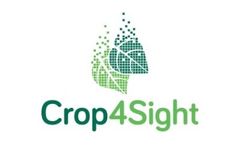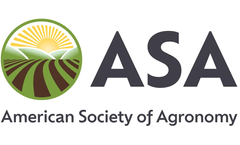Measure Rainfall Canopy Articles & Analysis
16 articles found
Potato agronomy is complex and requires a lot of planning, monitoring and evaluation throughout the production process. CPM finds out how digital agronomy tool Crop4Sight can help in all three areas as preparation for the 2023 season gathers paceIf you fail to prepare, you prepare to fail – an adage that is very relevant when thinking about potato crop establishment, with half the agronomy done ...
Who is Bitwise Agronomy, and what do they do? Bitwise Agronomy, an emerging agritech company based in Tasmania, has just launched GreenView: a smart imaging and data-collection application that helps vineyard owners assess their vines' conditions and make crop management decisions at a touch of a button. By capturing imagery through a roving camera, GreenView turns a vineyard entire plot into ...
If you are looking for a classic example of the circle of life, consider the forest canopy structure. A forest’s canopy structure is influenced by environmental and soil factors, and it also influences these factors in return. It is an aspect of forest ecology that is receiving more attention in this age of climate change emergency. The canopy structure is often overlooked, with most of the ...
The canopy protects the ground from the force of rainfall and makes wind force more moderate. ...
Inclined point quadrat: The vegetation canopy is measured by counting the number of contacts made by a needle in a given quadrat. This is time-consuming and suitable only for crops up to 1.5 meters high. Digital plant canopy anaysis: Perhaps the most accurate analysis of leaf area index uses photography from either below or above the ...
Inclined point quadrat: The vegetation canopy is measured by counting the number of contacts made by a needle in a given quadrat. This is time-consuming and suitable only for crops up to 1.5 meters high. Digital plant canopy anaysis: Perhaps the most accurate analysis of leaf area index uses photography from either below or above the ...
This year VineView released an exciting new product called PureVine, that collects and represents data on a vine-by-vine basis. Not only does this provide the opportunity to look at individual vine performance, it also allows a statistical representation of a block expressed in number of vines. In addition, it gives growers information about non-productive vines by analyzing gaps in the canopy. ...
ByVineView
This study was carried out to evaluate the use of the crop water stress index (CWSI) for irrigation scheduling of sugar beet for two years under the semi arid climate of Iran. Statistical relationships between CWSI and yield, quality parameters and irrigation water use efficiency (IWUE) were investigated. Irrigations were scheduled based on 100 (I100), 85 (I85), 70 (I50) and 0% (I0) of plant ...
Each individual tree significantly alters the growth of surrounding vegetation by partitioning of rainfall and nutrients to the rooting zone. The Iranian Hyrcanian forests are among one of the most fragile ecosystems of the country owing to large industrial activities for logging and extensive urbanisation. These may accelerate disturbing of this unique type of forest. Of concern currently is an ...
Nitrogen available to support corn (Zea mays L.) production can be highly variable within fields. Canopy reflectance sensing for assessing crop N health has been proposed as a technology to base side-dress variable-rate N application. Objectives of this research were to evaluate the use of active-light crop-canopy reflectance sensors for assessing corn N need, and derive the N fertilizer rate ...
Within-field variability of corn (Zea mays L.) N need calls for development of precision fertilizer application strategies. One approach many are investigating is in-season canopy reflectance sensing. Justification for this strategy partly rests with the premise it will improve N use and reduce N loss from fields. The objective of this study was to determine the potential environmental benefits ...
Active canopy sensors can be used to assess corn (Zea mays L.) N status and direct spatially-variable in-season N application. The goal of this study was to determine optimal sensor spacing for controlling whole- and/or split-boom N application scenarios for a hypothetical 24-row applicator. Sensor readings were collected from 24 consecutive rows at eight cornfields during vegetative growth in ...
With the increasing cost of fertilizer N, there is a renewed emphasis on developing new technologies for quantifying in-season N requirements for corn (Zea mays L.). The objectives of this research are (i) to evaluate different vegetative indices derived from an active reflectance sensor in estimating in-season N requirements for corn, and (ii) to consider the influence of the N:Corn price ratio ...
Efficient use of real-time canopy sensors requires knowledge of the scale (resolution) of variation in the measured canopy property. Knowing the amount of needed optical data requires estimation of the optimal combination of physical sensor density (number of sensors along the applicator boom) and sensor output density (sensor readings per unit distance along the travel path). The objective of ...
Efficient use of real-time canopy sensors requires knowledge of the scale (resolution) of variation in the measured canopy property. Knowing the amount of needed optical data requires estimation of the optimal combination of physical sensor density (number of sensors along the applicator boom) and sensor output density (sensor readings per unit distance along the travel path). The objective of ...
Results from four successful tracer experiments carried out in a dense forest canopy are presented. For each experiment, sulphur hexafluoride SF6 was released from a point source in trunk space and air samples were collected at 19 horizontally distributed locations in the canopy. Meteorological measurements include fast-response turbulence data recorded at several locations in and above the ...







